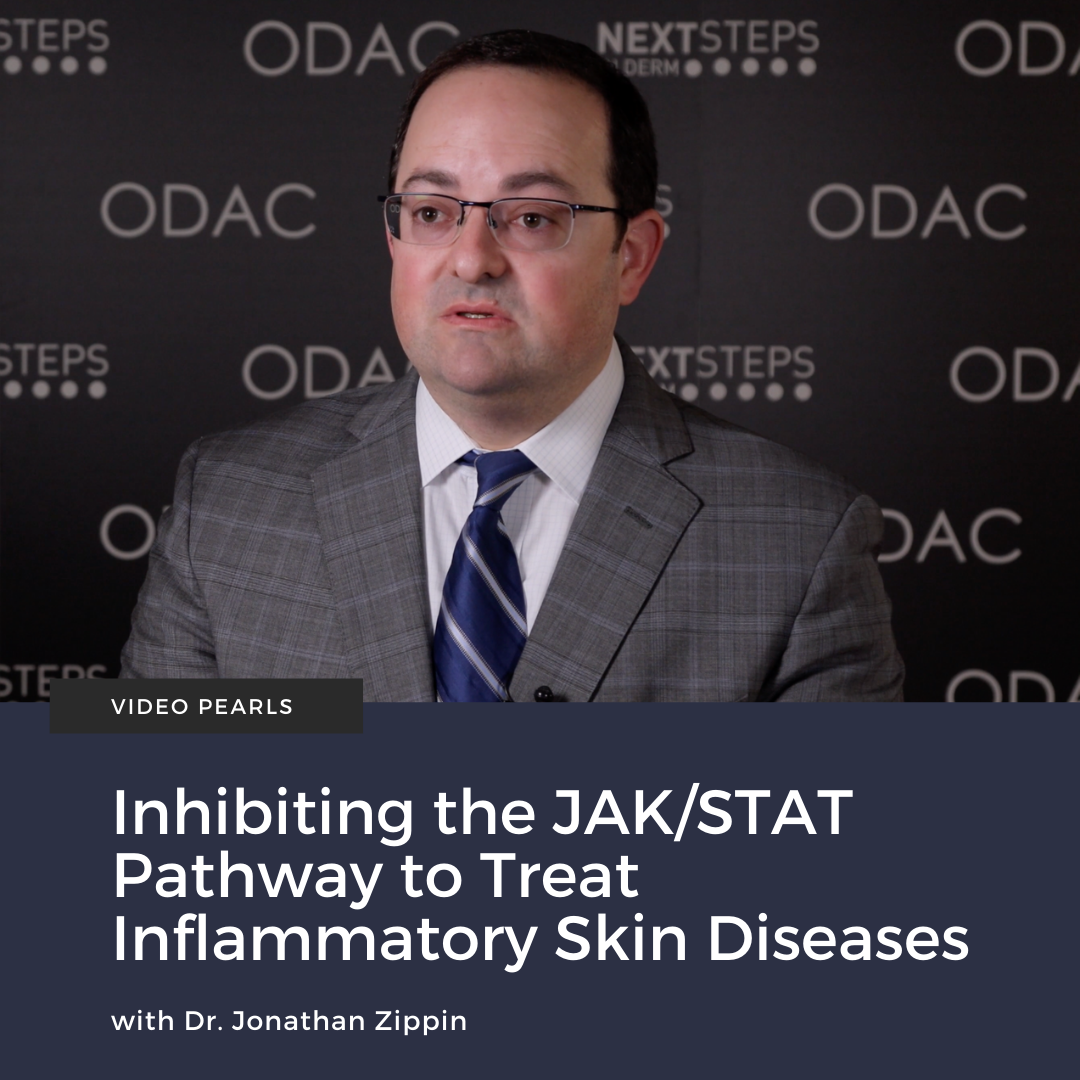Next Steps in Derm, in partnership with ODAC Dermatology, Aesthetic and Surgical Conference, interviewed Dr. Jonathan Zippin, Vice-Chair of Research and an Associate Attending Dermatologist and Associate Professor of Dermatology at Weill Medical College of Cornell, and Director of the Contact, Occupational and Photodermatitis Service. Watch as he reviews the JAK/STAT signaling pathway in normal immune biology, explores the players involved in the pathway, their normal function, and discusses why inhibiting this pathway would be helpful for treating inflammatory skin diseases.
Further Reading
 Disorders of Hypopigmentation
Disorders of Hypopigmentation
Hypopigmentation and depigmentation of the skin can be due to multiple causes and has a broad differential diagnosis. The most common cause of depigmentation worldwide is vitiligo. This disorder affects 1-2% of the world’s population and is seen in all races. Vitiligo is an autoimmune disorder in which the predominant cause is an attack by CD8+ cytotoxic T cells on melanocytes in the epidermis. This condition can have a significant negative impact on the quality of life of affected individuals. Treatment options currently include psychological counseling, topical therapy, systemic therapy, phototherapy, surgical therapy, and depigmentation. In patients with stable, refractory disease, successful repigmentation has been achieved using mini-punch grafting, blister grafting, and non-cultured epidermal suspension (NCES) grafting. Emerging therapies include the Janus kinase (JAK) inhibitors ruxolitinib and tofacitinib. Further studies exploring the pathogenesis of vitiligo are warranted in order to optimize treatment for affected patients.
 Navigating Targeted Therapeutics in Dermatology: Biologics and Small Molecules
Navigating Targeted Therapeutics in Dermatology: Biologics and Small Molecules
Dermatology is entering an exciting era with new, targeted immune-modulating medications for treating a variety of dermatologic conditions including psoriasis, atopic dermatitis (AD), and hidradenitis suppurativa. Previously, mainstay treatments consisted of topical corticosteroids or broad systemic immunosuppressants. Recently, our understanding of cytokine signaling cascades has grown, presenting new opportunities to target skewed immune responses. Two major classes are biologics and small molecules. Herein, we highlight the similarities and differences between these two categories of targeted medications. JAK
About Jonathan Hale Zippin MD, PhD
 Jonathan Hale Zippin M.D., Ph.D. is the Vice-Chair of Research and an Associate Attending Dermatologist and Associate Professor of Dermatology at Weill Medical College of Cornell. Dr. Zippin is the Director of the Contact, Occupational and Photodermatitis Service. Dr. Zippin is the principal investigator of a laboratory that studies the role of cAMP signaling in normal skin biology and disease.
Jonathan Hale Zippin M.D., Ph.D. is the Vice-Chair of Research and an Associate Attending Dermatologist and Associate Professor of Dermatology at Weill Medical College of Cornell. Dr. Zippin is the Director of the Contact, Occupational and Photodermatitis Service. Dr. Zippin is the principal investigator of a laboratory that studies the role of cAMP signaling in normal skin biology and disease.
Dr. Zippin is a member of the American Academy of Dermatology, American Association of Cancer Research, Pan-American Society of Pigment Cell Research, and the American Contact Dermatitis Society.
Dr. Zippin has authored numerous peer-reviewed publications in the area of signal transduction and skin disease and has published a variety of papers and chapters reviewing the treatment of dermatologic diseases.
Did you enjoy these video pearls? Find more here.
Next Steps in Derm is brought to you by SanovaWorks.

